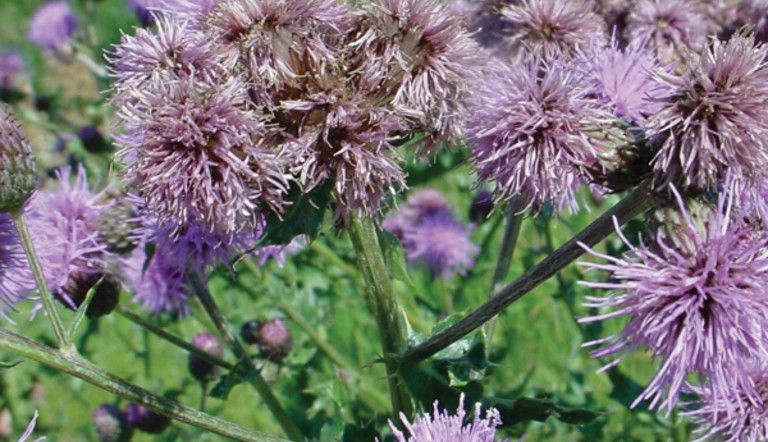
Pest Profile: Canada Thistle
Colonies of the weed form root buds that can spread up to five metres from the parent plant. These deep roots can reach up to 3 metres in length, making the weed incredibly hearty and drought-resistant. Its seeds spread by wind, and though they typically germinate within a year, they can lay dormant for years until they reach shallow soil. Control is difficult, and often requires a combination of cultural and chemical methods.

TYPE
- Perennial
- Broadleaf
IDENTIFICATION
Plants are from 12 inches to 5 feet tall with several branches. Leaves are a shiny, deep green colour and arranged alternately on the stem and branches. Some biotypes have thin, flat leaves with short, fine spines, arranged sparsely around a slightly toothed edge. Most plants have leaves that are thick and leathery with deep and irregular serrated margins and long sturdy spines. Stems have few spines, if any.
CONTROL TIPS
- Canada thistle is a persistent weed that requires a multi-year combination of chemical and cultural control practices. Root starvation is an important method for control. In addition, prevention of plant establishment and spread is essential.
- Use effective crop rotations with strong competitors for Canada thistle.
- Top growth can be suppressed in a number of crops by herbicides; however, roots and shoots can grow into new plants.
REGISTERED HERBICIDES
- BADGE®
- FORCEFIGHTER® M
- ESTEEM®
- INVOLVE® 50 WDG1 + Glyphosate
- RUSH® 241
1 Suppression.
Please read each label to determine which herbicide is appropriate for the crop affected.
REFERENCES AND ADDITIONAL READING
“Canada Thistle.” Province of Manitoba Agriculture. Online. https://bit.ly/2BL73Zu
Raine, Michael. “Weed of the Week: Canada Thistle.” Western Producer. 2 July 2015. Online. https://bit.ly/2BHbl4j
“Tips for Controlling Canada Thistle and Avoiding Crop Losses.” ADAMA Canada. Online. https://bit.ly/2MtdF3L